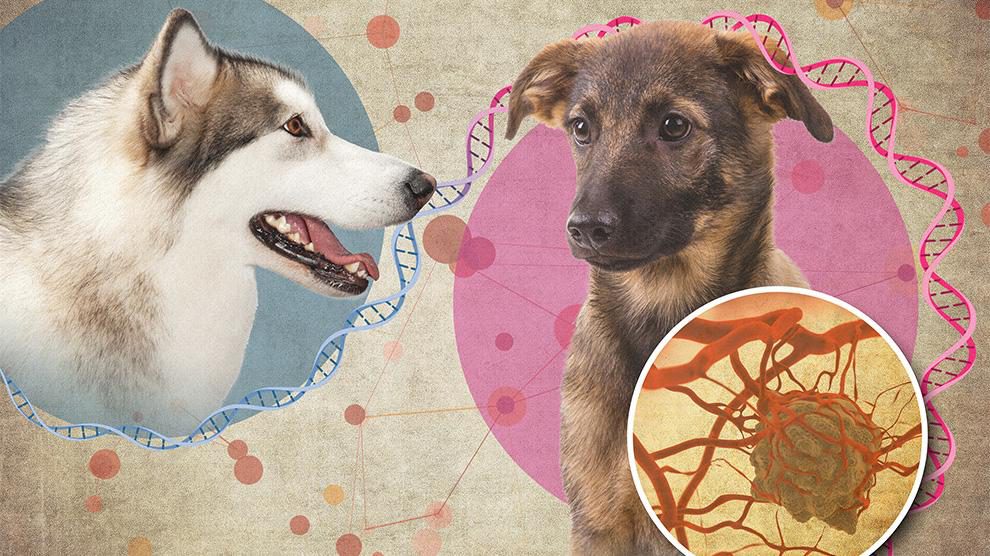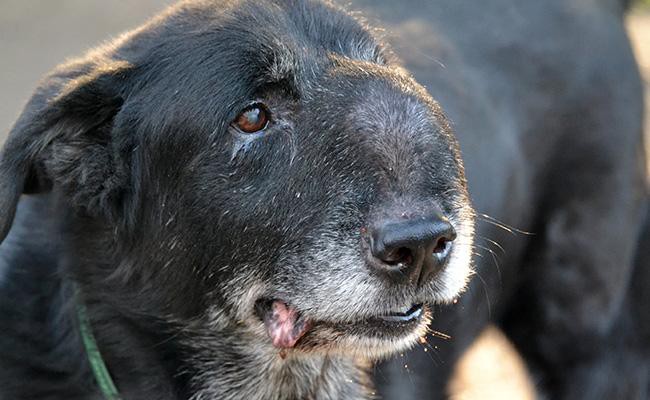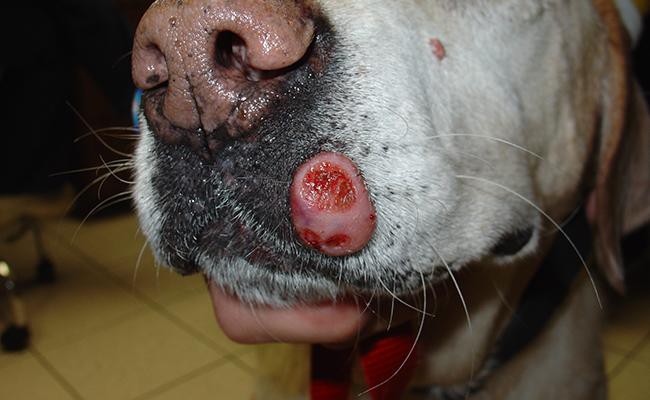Dog Pregnancy Calculator And Timeline
Cancer in dogs is one of the major diseases that cause sudden and, in some cases, painful death in many dog breeds. Research confirms that around 50% of dogs in the age group of 10 -11 years old suffer from this deadly disease.
The most common cancers found in the dog breed include Lymphoma, Oral Melanoma, and breast cancer. The ‘Big C’ can be treated if diagnosed early; here’s a complete guide to help you identify the common symptoms of cancer and the various types that are most common these days.
Early Symptoms Of Cancer In Dogs
Even the slightest negligence on your end might cost your pet’s life. Cancer can be treated if diagnosed at an early stage. The early warning of cancer in dogs is very much similar to the ones found in humans.
You can easily identify at an early stage if you pay keen attention to its health and behavior; a small lump or bump on its body is the primary cancer sign in dogs. The following symptoms are widespread and require a little bit of alertness on your part;
Abnormal Swellings with Continuous growth
If you notice a lump that has an abnormal growth and doesn’t seem to stop, then you should take your pet to the vet for a complete checkup.
Unexplained Weight Loss and loss of appetite
Sudden weight loss in your pet shouldn’t be taken lightly; you may also notice your pet has lost interest in food. Cancer in the intestine could be one cause, so you should take your pet for a blood test.
Loss of Stamina
You may find your pet disliking exercise; there are numerous reasons behind your pet’s weakness, but it is safer to get a test done and have all doubts cleared.
There are numerous other symptoms, including bad body odor, bleeding wounds that won’t heal, difficulty breathing, etc..but not all symptoms point towards cancer. Hence, take your pet to a proper pet for diagnosis before you start panicking.
Common Types Of Cancer In Dogs And Treatment Methods
Here are a few most common cancers found in dogs.
1. Lymphoma
It is a type of cancer that affects a certain blood cell (lymphocytes) in the dog and the lymphoid tissues.
Since this tissue is present in the spleen, liver, bone marrow, and gastrointestinal tract.
Treatment
Lymphoma is an easily treatable form of cancer. The cure plan may include treatment every week; sometimes, the vet might suggest alternate chemotherapy sets to restore health when the situation is too worse.
2. Osteosarcoma
This is a type of cancer in the dog’s bone and is most commonly referred to as “cancer in the dog’s leg.” Small tumors in the limbs of giant dogs can turn cancerous if left unattended.
Treatment
Diagnosis through x-rays and other treatment methods at an early stage can prevent your pet from going through the pain.
This type is painful, and, in most cases, the doctor might suggest amputating the affected limb to provide relief to a certain extent. Chemotherapy is also suggested after amputation to slow down the metastases.
3. Oral Melanoma
Cancer in Dog’s mouth is a prevalent type of cancer found in aging dogs. Breeds that have a darker tongue and gum are mostly prone to oral melanoma.
Treatment
A certified vet should be consulted if you notice a lump in the dog’s mouth; you may be suggested to get your pet operated on primarily. The next steps may include a combination of chemotherapy and radiotherapy.
4. Mammary Gland Carcinoma
This mostly affects the mammary glands in female dogs. 50% of the diagnosed pets are reported to have died owing to this form of cancer.
Treatment
The vet might remove a portion of a tumor and send it for a biopsy to diagnose the disease’s severity. Most mammary tumors can be treated with surgery; only a few cases would need to go for chemotherapy to delay cancer regrowth.
5. Hemangiosarcoma
It occurs in the cells that line the blood cells. This form could spread into areas around the spleen, skin, and the heart’s right atrium. This is a life-threatening form of cancer that may go undetected until the tumor ruptures and causes internal bleeding.
Treatment
A combination of surgery and chemotherapy will be suggested in the initial stages. If the skin is affected, the vet may also prescribe radiation therapy for 25 days or more, based on the severity.
Feeding Cancerous Dogs
Different types of cancer are life-threatening. Although chemotherapy, radiation therapy, and surgical removal will treat this disease in some ways, they won’t cure cancer in your canine always.
Over the past 10 years, it is evident that a key to dealing with cancer in dogs is to create a better quality of life. Dog’s food bowl is the best place to start it.
Why Do Cancerous Dogs Need a Special Diet?
Dogs diagnosed with cancer usually have a weak immune system. Some cancer therapies may strain the system further. So, the dog’s body must build new tissue during the treatment.
Your pooch needs the essential nutrients in building up the new tissue. If they don’t receive those nutrients, they will use the available short supply of proteins and omega-3, 6, and 9 fatty acids to build more tissues.
This could lead to
- Weakened kidneys
- Atrophy
- Liver complications
It will be difficult for your doggy to recover from this disease in such situations.
In many cases, cancer cachexia is higher in dogs than in humans, a condition in which your dog will lose weight despite taking adequate nutrients. Reports say that the depletion of body fat contributes to weight loss in those dogs.
But, protein degradation is also a contributor to weight loss in dogs. Dogs facing cachexia will show decreased response to treatment, and this leads to a short survival time.
Vets have also reported that cancer can alter a dog’s metabolism. Usually, the cancer-stricken dog will utilize fats, proteins, and carbohydrates in different ways than its healthy counterparts.
Cancer cells metabolize glucose from carbohydrates and produce lactate as a byproduct. The dog’s body has to convert the lactate into a usable form. This will make your dog suffer from energy loss, whereas the tumor gains energy from carbohydrates.
So, vets suggest that a diet plan reduces the effects of cachexia – nourishing the dog and not cancer.
Anti-Cancer Diet for Dogs
It is vital to prepare an anti-cancer diet for your doggy. This diet should involve the right foods and the removal of foods that can make your dog’s condition worsen.
The diet should consist of
- Less amount of simple carbohydrates
- An adequate amount of bioavailable proteins
- A moderate amount of omega-3 fatty acids
It will help your dog in its overall health by increasing its tolerance to therapies and surgeries. Your dog’s immune response will also get increased with this diet.
Suitable Foods
- Fresh vegetables such as broccoli, carrot, capsicum, spinach, celery, and garlic
- Raw bones – Avoid cooked/smoked bones
- Fruits such as oranges, apples, pears, and grape
- Raisins
- Cottage cheese
- Eggs
- Chicken
- Fish oil supplements – They area good source of omega-3, 6, and 9 fatty acids and help lower inflammation, shrink tumors, and provide other health benefits.
- Flaxseed oil – It is a good substitute for fish oil, but dogs rarely eat flaxseed oil by itself.
- Ground or chunked meat such as chicken, beef, lamb, pork, turkey, etc.
- Vitamin C
Must Avoid Foods
It is vital to know what foods are not suitable for your dog having cancer. You should avoid feeding.
Tips To Prevent Cancer In Dogs
Apart from Age, genetics is also a factor that might cause cancer in dogs. Though there isn’t any confirmed thesis on the cause, there are ways to prevent Cancer in Dogs.
- Proper Diet –Choose a good and trustworthy food brand for your dog. Proper and safe food plays an important role in a dog’s health. Cut out too many carbs from the dog’s diet and ensure to include a lot of omega 3s, vitamins, and little fruits in their daily diet.
- Avoid Exposure to Toxins –Smoking Cigarettes near your dog could turn it to be a passive smoker. Limit its exposure to cigarette smoke and household cleaning chemicals; this way, you can help your pet live a pain-free long life.
- Avoid Unnecessary Vaccines –Always consult a vet before giving a vaccination to your dog; do not believe every commercial Ad on TV.
Of course, cancer is scary, but you can help your pet fight against it with proper care and treatment. Keep track of your pet’s health, and always report to a vet if you notice any abnormality.




















